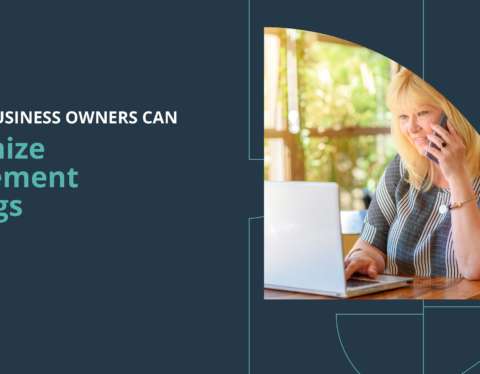Several of the industry’s large record-keepers have recently announced partnerships with financial wellness vendors to bring directly to their plan clients. For example, T. Rowe Price recently partnered with Smart Dollar; Fidelity recently announced their own program and began rolling it out to large plan clients.
As promoters and supporters of financial wellness benefits with our clients for the past 4 years, we see this as a way to rollout this benefit to a wider audience. However, the advisor should play a key role in Financial Wellness. In our experience, this is vital to the successful implementation of the financial wellness benefit.
There are generally two reasons companies implement financial wellness programs. 1) To solve a specific problem or set of problems, generally short-term. 2) The company wants to create a culture where employee well-being (health wellness + financial wellness) is an important component to the company’s identity. No matter the initial reason, the program will potentially have greater impact in partnership with an advisor. This may be your initial reason, but an advisor should then help you go through a process of determining specific measurable goals and objectives.
Once you have your goals and objectives, next comes picking the best vendor for your employee demographics. If you turn to your record-keeper, they will likely only provide you one option and it may even be their own product, but we know that not all programs are equal and you need to determine the best fit for your participants. If the plan intends to use plan assets to pay for this benefit, according to the Department of Labor, they must benchmark various vendor’s services and fees and document that process. For our plans, we have already conducted that process.
So, are you saying that 1 vendor is the best fit for all companies, employee types, and demographics? This is certainly not the case. The marketplace offers a variety of financial wellness providers who each have unique spins on the benefit and in turn “speak to” a different population. An advisor, who utilizes best practices of financial wellness, brings the value of looking at multiple providers and assisting you in finding the vendor that your employees will likely respond to the best. Why implement it, if the employees don’t utilize it? While the underlying elements of the benefit are important, the benefit being the right fit for your employees is vital as well.
Once you have selected a vendor, now what? How do you get this benefit out to the employees? How do you implement this? Again, an advisor can help with this hurdle. Your advisor should sit on the same side of the table and assist you in determining the implementation plan and best practices for a successful financial wellness benefit launch. Why do it alone? Would you do your health wellness benefit alone? So, why try to do your financial wellness benefit alone? A qualified advisor should be familiar with these products and the best practices for implementing your financial wellness benefit to your workforce.
There are certain elements or tools that are common to most of the successful financial wellness programs, which are similar to health wellness. One of these features is an aggregate report for the plan sponsor (if your tool doesn’t, that’s another discussion), but do you know how to interpret that report? What does that report really mean for you about your participants? We have plan sponsor clients who have changed other programs at their company based on what they learned from the aggregate report. This benefit should give you a tool to understand your employees as much as it should help them with their financial wellness. Another value of an advisor is in helping you translate the terminology and reporting to something you can use within your organization.
Along with understanding the aggregate report comes what many companies take on as step 2 to their financial wellness program. Implementing what they’ve learned in the aggregate into their education program. Most employers are offering some sort of retirement education, wouldn’t it be beneficial if it mirrored the challenges you’re learning your employees have? An advisor can be this link, implementing what is learned in the aggregate report with the educational offerings. This may help improve the value of the education as well. Suddenly they aren’t meaningless sessions, but sessions that the employees associate with their financial wellness and see how it can benefit them. They’ve been awakened to their challenges, now help them address them.
To Recap:
- Advisors should help you determine goals and objectives
- Advisors can help you benchmark vendor options and select the one most appropriate for your plan demographics.
- Why do it alone when your advisor can help?
- Advisors can assist in interpreting the aggregate report.
- Integrate the wellness benefit into education plan.

